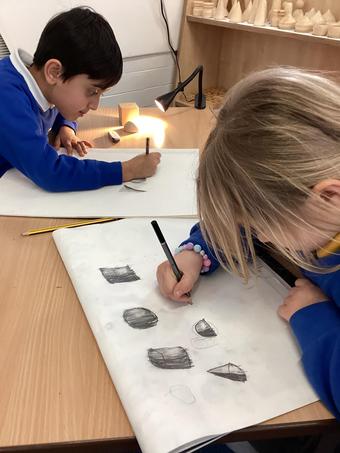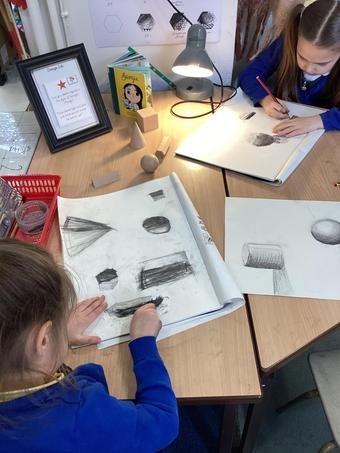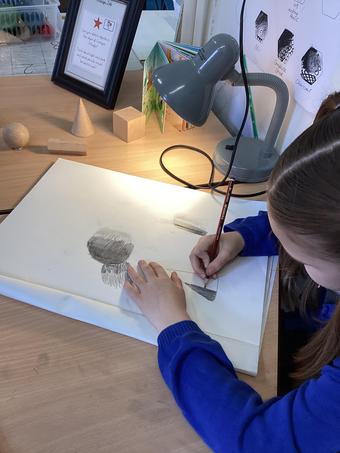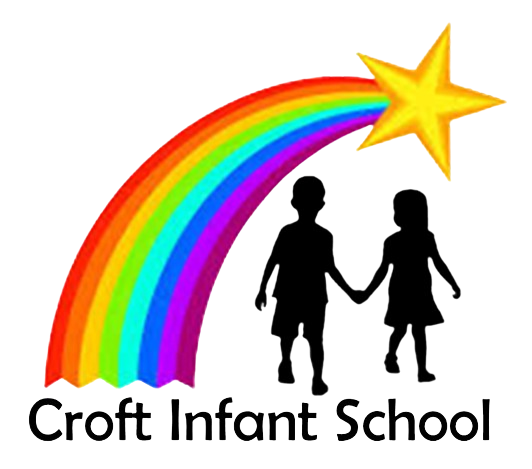Art!
Our fabulous Art lead is Mrs Wood!

Intent of the Art & Design Curriculum
The aim of the art curriculum at Croft Infant School is to provide a rich and stimulating environment that encourages children to explore, express, and develop their creativity. Through art, children will have the opportunity to develop their fine motor skills, experiment with a variety of materials, engage with different art forms, and appreciate the works of various artists. The intent is also to cultivate a sense of self-expression, imagination, and cultural awareness, fostering a love for the arts that extends beyond the classroom.
Implementation
Comprehensive Art Curriculum
- Plan a well-structured and sequential curriculum that reflects the
EYFS Early Learning Goals and the National Curriculum's key aims and objectives for art in Key Stage 1.
- Include a range of art forms, such as drawing, painting, sculpture and collage, to provide a broad and balanced art education. It will teach skills in these areas as well as enabling pupils to create personal artworks.
- Identify opportunities to link art with other areas of the curriculum, promoting cross-curricular learning and reinforcing children’s understanding of different subjects.
- Plan in carefully, appraisal of the work of a range of diverse artists and look closely at their art, identifying what they are ‘experts in’ and trying to foster their expertise by learning those skills.
Skilled and Knowledgeable Staff
- Ensure that teachers have appropriate subject knowledge and expertise to deliver high-quality art lessons.
- Provide professional development opportunities for teachers, enabling them to continually improve their understanding of different art skills and techniques.
- Encourage teachers to model and demonstrate art processes, techniques, and creative thinking to inspire children and encourage their own artistic exploration.
Engaging and Inspiring Resources
- Provide a wide range of art resources, materials, and tools, including a variety of paints, brushes, pencils, clay, paper, and other materials.
- Display examples of high-quality artwork by various artists, both historical and contemporary, in classrooms and communal areas.
- Use digital technology, such as interactive whiteboards or tablets, to enhance children's understanding of art and explore digital art forms.
Creative and Supportive Learning Environment
- Create a welcoming and stimulating art studio or ‘workshop area’ where children can work independently, in pairs, or in small groups.
- Facilitate a supportive and inclusive environment where children feel safe to take creative risks, make mistakes, and learn from them.
- Foster a culture of peer collaboration and appreciation of each other's work, promoting a sense of pride in their own artistic achievements and empathy towards others.
Cultural Diversity and Inclusivity
- Ensure that the art curriculum embraces cultural diversity by exposing children to a wide range of artists and art forms from different cultures and time periods.
- Celebrate cultural events and festivals by engaging children in art projects that reflect the traditions and practices of various communities.
- Encourage children to use art to explore their own identity, heritage, and sense of belonging.
Impact
Increased Creativity and Confidence
- Children will develop confidence in their own creative abilities and become more willing to take risks, experiment, and explore new ideas.
- They will learn how to communicate their thoughts, feelings, and ideas effectively through different art forms, developing their personal expression skills.
Improved Fine Motor Skills and Sensory Development
- Regular engagement with art materials and tools will support the development of fine motor skills, hand-eye coordination, and spatial awareness.
- Children will have opportunities to explore different textures, patterns, and sensory experiences, fostering their sensory development.
Appreciation of Art and Cultural Awareness
- Children will gain an understanding and appreciation of artworks from different cultures and periods, developing their cultural awareness and respect for diversity.
- They will begin to recognize and discuss the work of famous artists and understand how art contributes to the cultural heritage of society.
Artistic Understanding and Techniques
- Over time, children will acquire knowledge and understanding of various art techniques, processes, and materials, enabling them to produce increasingly sophisticated artworks.
- They will develop the ability to analyze, interpret, and evaluate their own and others' artwork, developing a critical eye and reflective thinking skills.
Positive Wellbeing and Emotional Development
- Engagement with art can act as a form of therapeutic expression, providing children with an outlet for emotions, calming their minds, and promoting positive wellbeing.
- Through art, children can develop resilience, perseverance, and problem-solving skills as they encounter challenges and find creative solutions.
In summary, a high quality art curriculum at Croft Infant School infant school will create a positive and inspiring learning environment, fostering children's creativity, cultural awareness, and artistic abilities. It will equip them with the skills, knowledge, and confidence to explore, express, and appreciate art both within and beyond the school setting.

In art Y2 have been learning about the artist Georgia O’Keefe and have completed an artist study in their independent learning
Year Two have been exploring different pencils to create sketches of objects. The pictures show different ‘tones’ which means areas of light and dark.



